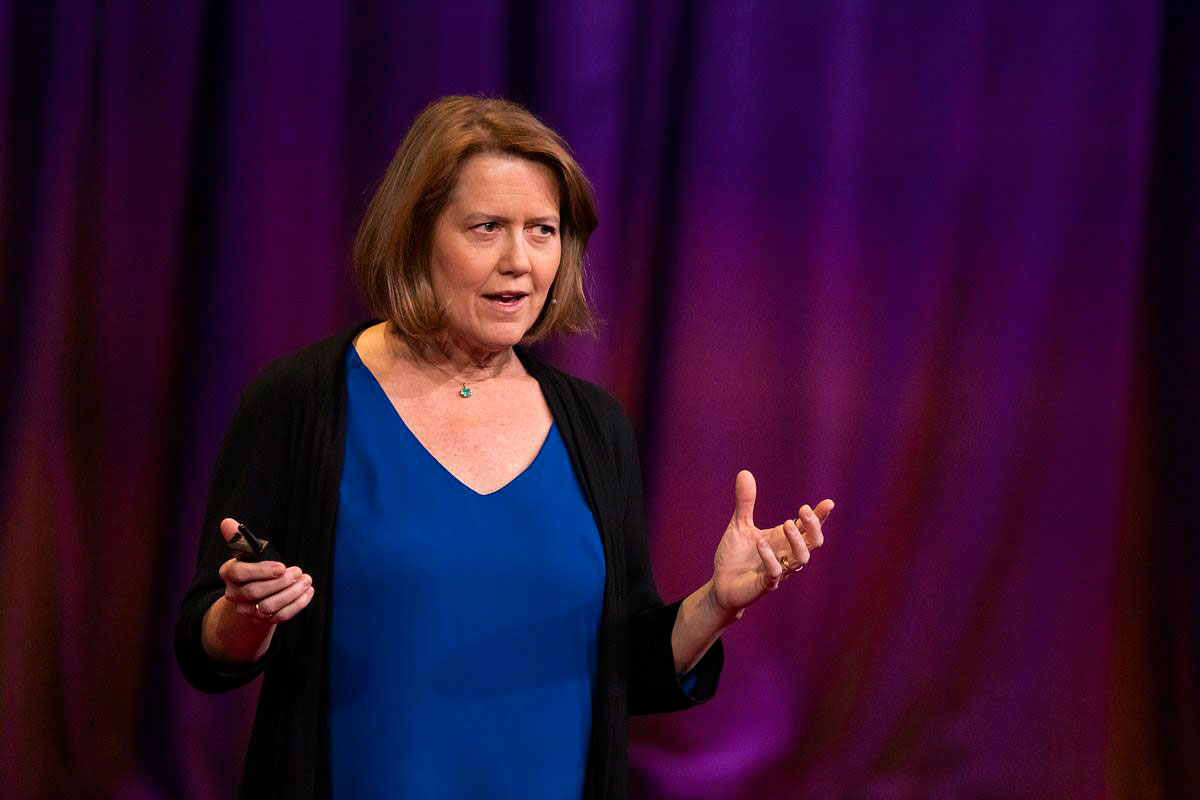
Podcast: Play in new window | Download (Duration: 51:55 — 47.5MB) | Embed
Subscribe: Apple Podcasts | Spotify | Email | RSS | More
Pathways & switches of pain affect well-being & productivity. Amy Baxter, MD. explores recent insights about managing pain and learning coping mechanisms.
Watch on YouTube
Download the printable newsletter here
Contents
Episode
Proem
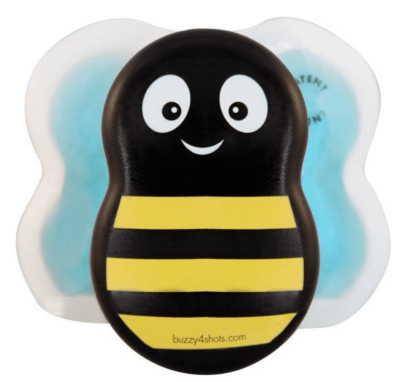
Buzzy, Relief from Needle Pain by Amy Baxter
How crazy is it that pain is one of my favorite topics? Not so crazy as pain may be life’s most common symptom. One study pegs the annual cost of pain (as a primary diagnosis) to be between $261 to $300 billion. Yikes. No one I’d rather talk with about pain than Amy Baxter. Amy and I correspond regularly about life and pain. We last recorded a conversation about pain in July 2019, Pain: The Solution – Many Solutions. Our knowledge about the pathways and switches of the brain’s survival system has increased dramatically since 2019. Let’s jump right in.
Podcast intro
Welcome to Health Hats, the Podcast. I’m Danny van Leeuwen, a two-legged cisgender old white man of privilege who knows a little bit about a lot of healthcare and a lot about very little. We will listen and learn about what it takes to adjust to life’s realities in the awesome circus of healthcare. Let’s make some sense of all of this.
Learning from lived experience
Health Hats: You’ve learned much about pain since we last talked. Tell us about that.
Amy Baxter: I broke my neck in 2015 and then got intubated for a while, and then I had a ripped rotator cuff that I ignored until it got horrific. So, I feel grateful that I’ve had the experience to cope with my own acute and chronic pain, mostly chronic. It’s nothing like I imagine having a genetic issue or having an inflammatory ongoing issue, and particularly something like covid or fibromyalgia or an autoimmune system situation where it’s ongoing and systemic. Nonetheless, I’ve had that experience, which has been valuable. I also have been working with the National Institutes of Mental Health, Helping to End Addiction Long-Term Initiative, bridging that place between pain and opioid use because if we didn’t have the issues of post-surgical pain and acute pain that we treated with opioids, we wouldn’t have an opioid problem. I’ve been busy.
Health Hats: Goodness, where should we start?
Amy Baxter: Let’s start with the stuff I put in the TED Talk because I spent a lot of time trying to encapsulate what I’d learned so people could use and benefit from it, change society and how we deal with healthcare in this company or country—Freudian slip.
Oldest and Best Survival System
Amy Baxter: Physicians are not taught about pain in medical school. We don’t know what it is. We don’t understand how to treat it. We don’t think it’s our job because we’re supposed to figure out what caused the pain and fix that or inflict pain to diagnose it. But most people go to the doctor for pain. So that was something I hadn’t appreciated. What we have learned about pain in the last 20 years through functional MRI is that it’s not what we do learn about in medical school, which is you poke your finger, and if you had lidocaine in there, it wouldn’t hurt. But if you don’t, it goes up to your brain and hurts. Instead, pain is just the oldest and best survival system, so it’s a full-brain, total symphony of everything you’ve ever associated with something you want to avoid. So, pain is not just the incoming stimulus. It is all the memory, fear, decision-making, and actions, and it’s just this giant response. So sometimes your brain is wrong about how much pain you should feel, and sometimes you can learn how to override the brain and say no, we’re fine.
Pain as opportunity
Health Hats: I automatically react whenever anybody uses the word should. And I’m wondering if I can frame it as being helpful to you instead of should.
Amy Baxter: It’s an option. I always tell my kids that it is an opportunity, not an obligation. So, if we understand that an opportunity is happening that causes us to feel pain, it makes it easier to think about ways to cope with it.
Health Hats: Unknown pain is so scary.
Amy Baxter: We talked about it offline recently. Once you’ve had chronic pain that flares back up, it’s easier every time to remember what you do that helps. And last time, you told me about hydration, and I had not been aware that even mild dehydration increases your pain sensitivity. What are the things that you tell people and the things that you do? What is your pattern? What do you do when you’ve had pain that then flares up?
Health Hats: I just ordered a shirt that says, drink water, love hard, fight racism, and drink water Is the top one.
Amy Baxter: All good things. And with the opportunities you do. That’s proportional.
The thalamus conducts the switchboard

Create in DALL.E
Pain goes into your brain in sensation nerves that get filtered in many places. So, they get filtered in the spine, they get filtered in the brain’s conductor, the thalamus, and when people do not have chronic pain, the thalamus sends information to the part of your brainstem saying, cancel that out. Or just dial that down, please. We don’t need that. But when you have chronic pain, that area of inhibition shrinks a little. And then the areas in the thalamus that say send this to the areas that get worried about pain and ramp it up. Those areas get bigger. When it’s something like knee pain that you’re going to have surgery for your osteoarthritis, the thalamus changes shape during the development of this pain. And then, six months after the knee surgery, it goes back to normal. This tells us that the brain’s responses to pain are very plastic. They can go both directions. They can be helpful in inhibiting pain. They can be unhelpful in decreasing that inhibition. And it also is something that can be modified. So, the next level of modification comes from pain, which goes from the thalamus to the brain switchboard called the anterior cingulate cortex (ACC).

Created in DALL.E
But whatever, there is a switchboard that then shoots that information out to memory, options, optimism, hope, fear, short-term and long-term decision making, and all these other places, and that ACC area can be very quickly taken offline by solving a problem. It must be a visual problem. It has to be a discrimination problem. Is that a cow or a horse, or is what I tell people to look at a line of text and count how many of the letters have holes because then your ACC is just, wait, what? That’s supposed to be a letter. I’m used to it in this context of resolving conflicts. It is the primary job of the ACC.
Health Hats: ACC one more time?
Amy Baxter: The switchboard, it’s the switchboard that is supposed to send the message of pain all over your brain. But if you give it a decision-making task. To resolve a conflict, it will prioritize that. So that’s why distraction works. If distraction is something that you’re paying a lot of attention to, particularly if it’s a problem or a game or something or a critical decision-making thing, that’s why it decreases pain. Because suddenly, the switchboard, which is supposed to be activating all the rest of these areas, isn’t.
The information never gets there. So, you never have that input that you interpret as pain.
Pain: Your brain’s opinion of your safety
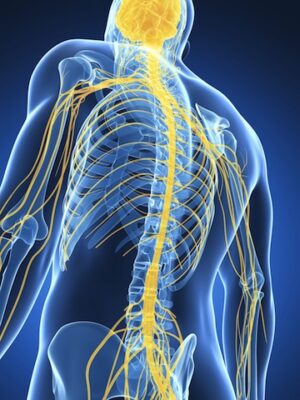 Amy Baxter: The practical ways to do this. A couple of things: one great phrase is pain is your brain’s opinion of how safe you are and this whole thalamus changing shape and all this influence up and down stuff. One of the things that helps reshape your brain’s connection. They call them connectomes, and they can now see that the areas that the switchboard is sending things through get thicker, heavier, and faster. The more pain you have, the more traumatic it is getting that pain, so that connectome just is how efficient your brain is at feeling pain. The more you have that connection laid down, like with chronic pain or something traumatic, the more intense the pain is going to be perceived until you disable that until you get it down. Even if your body is fixed even once, this is why you get that. They call it ramp-up or central sensitization. If you’ve had something that has hurt forever, like knee pain, you continue to feel more pain in that area until, even if it’s fixed, it has a chance to wear down. I think the sixth month is also interesting because when people with chronic pain start on a program of intentionally trying to ignore the pain, if they know they’re safe, intentionally going, okay, I can push through this. I’m going to want to tolerate this amount of pain. It still takes about six months before you have a day where you realize you don’t remember if you felt pain yesterday or not. It takes a while. And the other thing about these connectomes is not everybody has the same intensity of response.
Amy Baxter: The practical ways to do this. A couple of things: one great phrase is pain is your brain’s opinion of how safe you are and this whole thalamus changing shape and all this influence up and down stuff. One of the things that helps reshape your brain’s connection. They call them connectomes, and they can now see that the areas that the switchboard is sending things through get thicker, heavier, and faster. The more pain you have, the more traumatic it is getting that pain, so that connectome just is how efficient your brain is at feeling pain. The more you have that connection laid down, like with chronic pain or something traumatic, the more intense the pain is going to be perceived until you disable that until you get it down. Even if your body is fixed even once, this is why you get that. They call it ramp-up or central sensitization. If you’ve had something that has hurt forever, like knee pain, you continue to feel more pain in that area until, even if it’s fixed, it has a chance to wear down. I think the sixth month is also interesting because when people with chronic pain start on a program of intentionally trying to ignore the pain, if they know they’re safe, intentionally going, okay, I can push through this. I’m going to want to tolerate this amount of pain. It still takes about six months before you have a day where you realize you don’t remember if you felt pain yesterday or not. It takes a while. And the other thing about these connectomes is not everybody has the same intensity of response.What’s going on? Communicating to physicians
Physicians need to know many of those things because it’s part of why I tell people when they’ve got a flare and can’t stand it and must go to the emergency room. And they feel awful, and people are looking at me as drug-seeking. It helps to have something that’s signed by another doctor that says this is the chronic pain condition I have. These are what I do. And I have a flare. It has been this long. Usually, it feels like this. It is different because of this. Because that’s the thing, you’ll get blown off because you’ve got something different. But all they’re hearing is chronic pain. And I’m here for medicines. It’s very much focusing on this is different, or my doctor and I agree. We do this when it gets to this level, which it has been for two days. And so that, it’s helpful to know that what’s going on is you have a connectome that is extremely efficient at feeling pain, and so that’s part of what’s going on.
Sickle cell, self-knowledge, mu receptors
Health Hats: One of my dearest friends has sickle cell. She’s very sensitive to what’s going on with her body. And as you said, she knows this is where I need to kick my plan to another level, another route. This is when you go to the emergency room. This is when you, and then not communicating with the clinician, can be frustrating because she knows what will work. And she’s tried all those: hydration, distraction, rest.
Amy Baxter says, believe me, I’m an expert in my pain. What I know now is that the receptors in the brain to morphine are the mu receptors that are mainlining Dopamine.
So, it’s a reward center where you still feel the pain. It’s just that you’re not afraid and feeling out of control, and then you don’t care about the pain as much. Those receptors change over time. And so, for my friend, she got to a place where morphine wouldn’t work. It was only Dilaudid because she said there was about a year when nobody would give her Dilaudid. She was in excruciating pain, and they kept giving morphine, which barely touched it. So the whole concept that the reward receptors that make you able to cope with pain change over the years, but they also change over a couple of days, which is why when you get sent home with oral opioids after surgery, it is probably not going to do much at all for most people because those receptors have gone, all right, we’ve been bathed in morphine now for a few days. We’re just going to shrink in and not react as strongly. So again, this is the whole problem with having short-term oral opioids after surgery or after an acute event because there’s just, that’s the time where there’s a lot of stuff that’s better to deal with it. Chronic pain is just a different situation.
Neurotransmitters: on or off
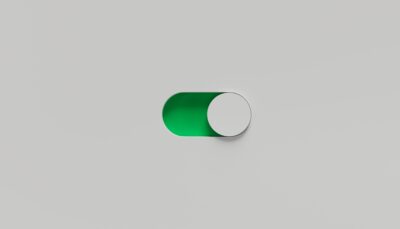
From Planet Volumes on UnSplash
Health Hats: So, you’re talking now about receptors. There are different kinds of receptors; some are personal, like genetic, familial, or experiential. And then when those receptors get triggered, I don’t know what words to use for any of this stuff.
Amy Baxter: Activate.
Health Hats: It sounds to me like then you’re saying that this pain that people are experiencing is this conglomeration of this whole menu of things that could happen and algorithms of pathways, whatever. Oh man, it’s just so complicated. What’s essential for the person is to have a better self-understanding.
Amy Baxter: Also, knowing the systems in the brain and how the brain communicates, is this a good thing or a bad thing? All these communications in the brain are either saying it’s bad or good. And when you’re activating like the Dopamine or the serotonin or love neurotransmitters or satisfaction or empowerment or mastery or connection, all those neurotransmitters or happiness neurotransmitters make you feel good. So, with pain, the neurotransmitter is trying to make you feel bad enough that you’ll avoid that situation in the future.
Health Hats: Okay, so that’s where you talk about whether they’re on or off?
Amy Baxter: They get switched, and then it’s like a New Year’s Eve cork that you pop, and a bunch of confetti comes out. So that’s what you trigger the neurotransmitter when it goes woo. And then, after a while, it brings it back in, and then you quit being able to go poo quite as much. But let’s be more practical. It is hard to think about this from a chemistry standpoint, but if you think about just these connections in the brain that are either good at deep, increasing pain inhibiting it so that it doesn’t bother you as much, or they’re good at increasing pain sensitivity to try to teach you your lesson.
Brain Fertilizer
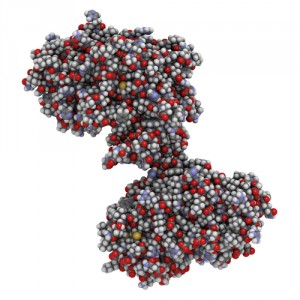
from canstockphoto.com/ now shut down
Amy Baxter: One of the most incredible things is that proteins in the brain can dismantle these connections that restore your brain to a normal function. One of the most powerful ones is that 10 minutes of exercise triggers a significant release of this Brain fertilizer. It’s called brain-derived neuropathic neurotrophic factor. It’s like brain fertilizer that will untangle some of these connections that make you feel more pain. When I was trying to get over month six or seven of my rotator cuff without getting surgery, and the cortisone had long worn off, and it’s this sick, sour pain that wakes you up every morning. I read this and was like, I’ve been too tired and sad to exercise. I will go ahead and do an elliptical for 10 minutes and see what happens. And after about three days of doing that, it was amazing how much better my arm felt. It wasn’t the arm getting exercised, but I realized it must have been this brain fertilizer decreasing some of the intensity of chronic pain.
Exercise as WD-40 loosening lubricant
Health Hats: It’s like WD 40 or something, right?
Amy Baxter: That’s true, too. All movement makes your brain say, okay, I don’t need to give a pain signal because we’re safe, and she’s doing this on purpose. We must be okay. Let’s stand down.
Health Hats: When I’ve experienced my worst pain, I have this goal of 3,500 steps a day. And when I had my worst pain, oh, I just the idea going outside and walking was even with my forearm crutches, it was like every step was excruciating, but I’m like determined. I’ve had it ever since I was diagnosed. I usually do 3,500 steps a day, so I could only really do a few hundred, but you are right after a few days of that. , I was in a different place. The pain wasn’t gone until I took steroids. That was more like the beginning of the end but of that pain. I was determined to take those steps. It made a difference. I didn’t get 3,500 steps. Oh my God. It was all I could do to get to the end of the driveway.
Amy Baxter: The elliptical thing and the BDNF is 10 minutes of your heart rate above 20% above average. So, you can even get that by doing cardiovascular weight stuff unless your arm hurts.
Acceptance and Commitment Therapy
Amy Baxter: But there’s a bunch of things going on, Danny, with what you’re describing. So there is a therapy called Acceptance and Commitment Therapy that is more effective than Gabapentin, and Gabapentin’s really an anxiety medicine. It’s just a slower one, but fear and control are the volume knobs for pain. And so you took control and said, I am going to feel pain, but I accept this, and I’m going to commit to walking. And just by being intentional about it, by intentionally deciding that you’re going to take a little bit more pain and tell the brain to shut up. This is what you’re doing. That practice and control over pain is what gets it better over time. Feeling the pain but not being afraid because you’re doing it on purpose is part of what gets it better over time.
So, it’s this: it’s turning down the fear and turning up control. It takes a long time, but those are part of it. Stephen Hayes wrote about commitment therapy after six months. Again, it works much better than oral medications for pain because you just are like, you know what?
Building Resilience to Trauma and Pain

From https://www.resiliencywithin.com/
Amy Baxter: I won’t use how much pain I’m dealing with as a metric. It’s whether I’ve done my steps or other things. That’s a great example of it not working overnight, but after a couple of days, you realize it’s better than it was. It’s still not gone. It’s just a little more comfortable or culpable. I found a remarkable book I want to dig more into, but it is called Building Resilience to Trauma by a woman named Elaine Miller Karas. It’s about jacking down the autonomic nervous system. The fight-or-flight nervous system is associated with natural disasters, war, etc. And it often is coupled with pain, but her book is really about how to get people who’ve been, who got PTSD from trauma past it, when talk therapy doesn’t work. Her premise is that your oldest brain is so focused on safety that if anything reminds you or you even think about what happened, you’ll freeze up. And so it’s just focusing on my autonomy. I feel my heart rate going. I feel my diaphragm clenching up and giving you language for that and then going, okay, so when you start to feel that wear on your body feels good, get language for what feels good, and concentrate on how your knee feels, concentrate on how your foot feels. And in doing that, people’s heart rate goes down, their stomach and lungs unclench, and they can practice just a few times. And then they’re able to get past that frozen place. So, almost all the stuff she talks about in the book is simple. It’s nine steps. It’s super simple. And this is a book to teach people how to do it. Again, building resilience to trauma. They’re in Ukraine. They’re in lots of different war-torn places. I think it’s got so much application for getting past some of what sucks about chronic pain and learning how to concentrate on a different part of the body that doesn’t also ramp up your fear and make you feel out of control.
Call to action
I need your help to expand my audience to younger people in advocacy. I’m doing more in short-form videos. Please help by pointing me to communities of young advocates and the channels and hashtags they use so I can listen and learn. I now have one URL for all channels and media. https://linktr.ee/healthhats, where you can subscribe, access episodes, my website, and social media, and search the Health Hats archive. Your support is appreciated.
Holocaust PTSD, pain
Health Hats: My mom was a Holocaust survivor and, growing up with somebody who had that kind of reaction. These are heavily triggered reactions. I will read this book because I bet some of the stuff her second husband Bill did just because he loved her and didn’t freak out that she was having these reactions. He was just about, okay, what can we do? I’m fascinated by the physiology, psychology, and spiritualism behind all this and how we can use it.
Melissa versus Fibromyalgia
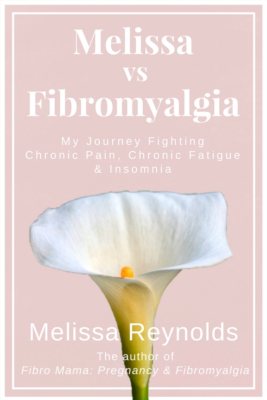
Book cover
Health Hats: When I think about how we use it, I think that so many people who don’t have helpers are turned onto this stuff. So, either they discover it for themselves, or they’re part of a community, like my friend in New Zealand who has fibromyalgia and a chronic fatigue syndrome program, and services that she provides or in her blog and her whatever.
Amy Baxter: Melissa versus fibromyalgia? Her stuff’s great.
Health Hats: I still follow her all the time. She’s brilliant. And anyway, that’s a whole other topic. On several levels, I’m thinking about how people find this opportunity that you’re describing, this knowledge opportunity. Then is it that they take stock of their health team, whether their health team is a partner, family member, medical person, or a non-medical clinician? How do they bring all this to bear? Because this is the rare person who could do this alone.
Amy Baxter: Because you’re exhausted. You’re overwhelmed and depressed because it’s abrading.
Health Hats: Yes. It’s exhausting. What do you think about that?
Helpers: Child Life Specialists
Amy Baxter: The person who taught me the most about pain is a woman named Regina Yocum. She is a child life specialist.
Health Hats: That means she works at a children’s hospital.
Amy Baxter: Child Life Specialists got it before anybody else. It is the concept of increased control by explaining what will happen and letting somebody know what to expect. Decrease fear by giving people options and letting them choose how they want. Either what they want to distract themselves with and then advocating for pain management. No, we’re not going to do this until we have a topical anesthetic, or we’re not going to do it until we have Buzzy, or so that you’ve got somebody advocating for you.
Brain’s survival system
Amy Baxter: So, she had juvenile arthritis, which is rheumatoid arthritis. She mainly uses a wheelchair intermittently. Something like when I don’t remember how many surgeries she had and she said, here’s the trick to pain. You can only do so much with the nervous, the nerves that are bringing pain to the spine. You can only do so much to fix pain. And there are so very few medicines that will do anything for pain. And they don’t last long because your brain pain is your brain’s survival system. It’s going to overcome medicines after a while. But she said there are a lot of different supplements that you can try. She said there’s a whole bunch of the turmeric, magnesium, and other stuff we’ve discussed before, but you can do even more physical interventions. There are even more brain bodies and ways that you can help the neuro trans do stuff that will make the neurotransmitters make you more comfortable. And she said, knowing that there’s always some other combination you can try, the hope is the part, and having options is the most significant part for addressing pain. We put those into a book on our website. Just every evidence-based thing I could find. So we’ve got a link we can put. That’s what works for pain. It’s a free download. But I think having a resource to try something else is helpful. And I have one other idea about this that Regina taught me, but I want to let you have a chance to respond to that.
Phlebotomists and clowns

Screenshot_2021-03-07-Laughter-League-on-Instagram
Health Hats: When I worked at Boston Children’s, one of the things that amazed me the most was there was this group of phlebotomists. When they came in the room, the kids, if they could move, would run to them and jump in their arms, and if they couldn’t move, their faces, which had been flat or miserable, lit up. And these were phlebotomists coming to take blood, and they were, it was just amazing. And that’s what they did. They were so tuned into understanding the kids and what they needed and what the routine was, and they did it. The kids were like, oh my God. They had control. They were just delighted to see her, and they felt safe. My other is the clowns, a specific type of child life specialist, and what they would do to go in the room and read the room, and then you know what will work and what will help.
Amy Baxter: Read the room and find the game.
Pain wuss or high tolerance
Health Hats: It was a whole other beauty. This all just makes so much sense. What’s funny is that I was at the chiropractor the other day. I went to the chiropractor, and his image of me is that I have a high pain tolerance, and my image of me is that I’m a complete wuss. And it’s tough for me to reconcile that, but now that I’m listening to you, I’m thinking that my tolerance for living with a lot of pain is low. That’s the wuss. I fast kick into, okay, what can I do? Okay, I must drink water. That’s first. That’s always first drink water. You know what I mean? And then I have this routine of okay, these are the things, do the vibration. Do you know what I got? If I don’t understand what’s happening, here are the things that generally work. But if it’s a specific pain, these things have worked already. I have three solutions. I know that one of them will work. And if one doesn’t work, I go to my wife and say I’m in trouble. She’ll help me navigate through that. But I never really thought, in turn, this is interesting, this dashboard, these switches, these, I mean, it all makes sense.
Fear and control
Amy Baxter: Everybody thinks it’s just wherever your baseline is and if you’re above or below it. It’s whether you’ve got a high tolerance or a low tolerance. One of the things you asked, and I think this gets into stuff Regina said, and your wife is when she was teaching families how to help kids with JIA or kids with pain. She said the thing is that Juvenile idiopathic arthritis is autoimmune stuff. What’s important? I came up with fear and control, or the volume for pain, but some of it’s because of what I’m about to tell you that she said. The thing is, if you feel vulnerable and you feel out of control and helpless, then it makes the pain worse, and you don’t do anything to help, and you don’t do anything, and so then you’re just muddled in it. She said, so what I teach the parents and caregivers to do is when the kid comes and says, I’m in pain, then it’s what would you like to try? And so, it’s not saying, let’s do this for you. I acknowledge that you’re in pain. That sucks. What do you want to try? Then you throw it back. And so, the person, the pain, is saying, maybe I’ll try this. And she said, and the thing is, often the kids are like, I don’t know. So then it’s what did you try last time? That was helpful. What was, or what’s something you haven’t tried in a while that has worked? So again, it’s still getting them back to where they’re empowered.
Hope in the right frontal cortex
Amy Baxter: This area is in the right frontal cortex, where optimistic people have more activity. Hope kind lives here, and that’s the area that lights up in people who don’t have chronic pain. And it’s got decreased activity with chronic pain. So, the more you can teach somebody how to think about their options. I think you’re activating the receptors there that can decrease pain.
Guiding someone to manage their pain
Amy Baxter: So, the first thing is, what do you want to try? The second thing is, what have you tried before? Third, what have you tried a long time ago that you haven’t tried in a while? And finally, it’s, is there something that you think I can do for you? Then the final thing is, if they don’t come up with anything, why don’t I do this? But there are so many places where I know you can figure this out. The workbook helps. So, if they don’t look at the workbook, you can look at it for them and say we haven’t tried turmeric. Let’s find out the best turmeric to use that kind of thing.
Primary care in Managing Pain

From DALL.E
Health Hats: Let’s shift to working with clinicians. I’m fortunate because my primary care doctor will say. I don’t know anything about that. Tell me about your experience with acupuncture or chiropractic in a different way than she’s accustomed to. Still, I like that she’s okay, I get validated, and I tell her my experience, and she’ll ask questions, and then that’s part of her toolkit. And she said, oh, I’m glad to know that. I have some people that that might be helpful for. I talk to many people in an adversarial relationship with their helping people. And that seems so. I can say I live in Boston. Clinicians are coming out of your ears.
Override and telehealth
Health Hats: I can go, which I have done. You’re not it. I can try somebody else, but most people can’t do that. This might be out of the realm of this conversation, but I don’t know your thoughts.
Amy Baxter: People have that issue all the time. There’s a woman named Jenny Shulkin. She and her dad, who was the head of the VA for a while started a company called Override. And at this point, you must pay something for a monthly connection, which is unfortunate.
I don’t know if insurance covers it, but some do. But anyway, it connects you via telemedicine to pain doctors and all sorts of pain doctors, like pain psychologists and rheumatologists, but a bunch of different people so that you can find someone with a telemedicine visit who can help. It’s a relatively new business, but if you’re in the middle of a rural place, there is an option to find some expertise. And then, as everybody who has been frustrated with a physician knows, part of our training is to act like we know stuff. And you must be secure with yourself to do what your doctor does and say, oh, I don’t know about that. Tell me more. Then, you also must have the bandwidth as a physician to be curious enough to look stuff up and have the time to do it.
Cultural humility
Health Hats: This is cultural humility.
Amy Baxter: Ooh, that’s a good phrase. I haven’t heard that before. That’s cool.
Health Hats: In a previous episode, I interviewed three people in the business of humility. Meaning, I don’t know, tell me more. Or that didn’t work. Okay, what are we going to try next? You are talking that language. Control that feeling of feeling helpless. I think in terms of physical, mental, and spiritual health. Spiritual health trumps all, as far as I’m concerned. Feeling helpless is spiritual. When I feel it slide, I must deal with it now because then, if I don’t, everything else is screwed.
Soul points and a bucket of pain

Created in DALL.E
Amy Baxter: Do you mean filling your bucket and interacting well with somebody? My daughter calls them soul points,
Health Hats: Yes. I love that. Tell your daughter I’m using that. I don’t know how this relates and whether I’ll use this in the episode, but now I realize that even though I am curious, I do this work where I always try to learn. I realized that I am increasingly living in a bubble in my retirement. And what I mean by that is that anything that messes with my pathological optimism, I’m like staying away from just because I can’t deal with everything else if I’m not in that space. When I meet people who I like, those are soul points. When you meet somebody and feel that soul point with them, okay, now that is somebody you know I will connect with. Now, I can’t afford it if I meet somebody, and it’s like soul-sucking.
Amy Baxter: I had a real insight into how we can talk about switches and neurotransmitters. Opioids don’t stop the pain feeling. They just give you so many soul points that you don’t care. Dopamine is such a huge reward that your bucket is filled up enough that you’re not noticing the bucket of pain. But all those other things that give you soul points are less intense, but good neurotransmitters like serotonin and friendship, love hearing music, and smelling something. All those things release different positive neurotransmitters.
They’re little soul points and maybe smaller coins of soul points. But Dopamine is the big giant gold coin of soul points. Now I’m getting metaphors mixed up, but. That’s one of the things is that what, one of the ways to deal with pain if you can’t stop the source of it is to figure out how many other ways you can get stuff that makes you feel good enough that you can just tolerate or ignore the pain because I’ve got enough stuff, I’ve got enough soul points accumulating other places.
Health Hats: Oh my God, this is brilliant. This stuff is so essential. so crucial on so many levels. Is there another point you want to make?
I am not my pain
Amy Baxter: I think this goes along with the Soul Point concept and with what pain is. If you realize that pain isn’t you, pain is just an accumulation of the brain trying to protect you and trying to teach you something, but it’s not you. It’s just this accumulated number of negative neurotransmitters. It may make thinking easier, so I have this giant bucket. I just need to figure out ways to override it. And that the great thing is over the two millennia that humans have been around, we have developed for movement and for doing things with other people in the community to our soul points and to make us feel better. Since our society doesn’t do that now, thinking about overriding this accumulation of pain with things that Give you more community movement, dedication, and determination makes sense. That is how we’re designed to feel better.
Love myself, pain included
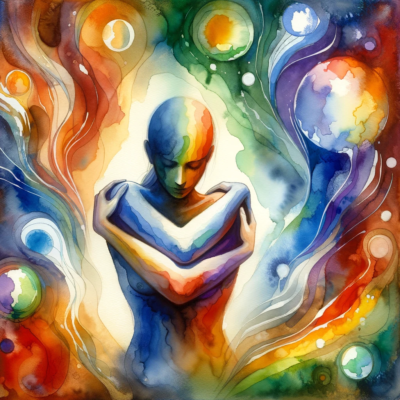
Create in DALL.E
Health Hats: I appreciate that. I guess I think about it a little bit differently. I used to think what was important for me was like what you said: I am not my pain. I am not MS. I am not my disabilities. But what I found more satisfying in the last five or ten years is I just have to love that stuff. That is all part of me, and what makes me this crazy person is all that. Would I have had all these experiences? I would’ve never met you if I didn’t have MS and didn’t have pain. I would’ve never met you. And what a shame that would’ve been. You know what I’m saying? I feel, oh, let’s just embrace this stuff. I have love it that this is me. I love it. Now, I am not delighted with everything that I am. I can be such a jerk sometimes, and I have bad habits. It’s all part of who I am and the spice. I can’t take it away. That’s the other thing we talked about in 2019. My goal is not to not have pain. My goal is to appreciate life and function as well as I can, and with whatever constellation of crap I’m dealing with or goodness.
All right. This is an excellent note to end on, honey. I love you. It’s so good to see you. And thank you for taking the time with me. This is going to be a killer episode.
Amy Baxter: It’s always such a pleasure, and now, especially with the hat.
Health Hats: Be well. Thank you so much.
Reflection
Full disclosure: Amy and I recorded a previous conversation. We worried after the first recording that we were too technical. I didn’t understand it well enough to insert explanations myself. So, we tried again. Now my problem is that I have twelve possible nuggets from this episode. I only want three to five. I may be able to cut it to six. Let’s see, I didn’t include Oldest and Best Survival System, Pain as Opportunity, Thalamus Conducts the Switchboard, What’s Going On? Communicating to Physicians; Neurotransmitters, On or Off; and Exercise as WD-40 loosening lubricant. Phew. Much richness. Peace be with you.
Podcast Outro
I host, write, and produce Health Hats the Podcast with assistance from Kayla Nelson and Leon and Oscar van Leeuwen. Music from Joey van Leeuwen. I play Bari Sax on some episodes alone or with the Lechuga Fresca Latin Band. I buy my hats at Salmagundi Boston. And my coffee from the Jennifer Stone Collective. Links in the show notes. I’m grateful to you who have the critical roles as listeners, readers, and watchers. Subscribe and contribute. If you like it, share it. See you around the block.
Please comment and ask questions:
- at the comment section at the bottom of the show notes
- on LinkedIn
- via email
- YouTube channel
- DM on Instagram, Twitter, Mastadon to @healthhats
Production Team
- Kayla Nelson: Web and Social Media Coach, Dissemination, Help Desk
- Leon van Leeuwen: article-grade transcript editing
- Oscar van Leeuwen: video editing
- Julia Higgins: Digit marketing therapy
- Steve Heatherington: Help Desk and podcast production counseling
- Joey van Leeuwen, Drummer, Composer, and Arranger provided the music on the intro, outro, proem, and reflection including Moe’s Blues for Proem and Reflection and Bill Evan’s Time Remembered for on-mic clips.
Credits
I buy my hats at Salmagundi Boston. And my coffee from the Jennifer Stone Collective. I get my T-shirts at Mahogany Mommies. As mentioned in the podcast: drink water, love hard, fight racism
Images
Sue Heatherington, fresh sight from the quiet edge provided the photos in the Reflection.
Many images created in DALL.E for a conductor, switchboard, primary care, soul points, and a bucket of pain, self-love, see you around the block.
From my UnSplash subscription, Tim Mossholder’s hoping hands, and Aparna Johri’s elliptical.
Inspired by and Grateful to
Melissa Reynolds, Libby Hoy and colleagues at PFCC Partners, Jason Stewart, Laura Marcial, Jessica DeFrank, Penny Cowan, David Edwards, CJ Rhodes, Barby Ingle, Diane and Mallory Smith, Mike Funk, Robyn Tiger, Sarah Cloud
Links and references
Amy Baxter’s Paincare Labs
National Institutes of Mental Health, Helping to End Addiction Long-Term Initiative
brain switchboard called the anterior cingulate cortex (ACC)
Brain Fertilizer: brain-derived neuropathic neurotrophic factor
brain-derived neuropathic neurotrophic factor
Acceptance and Commitment Therapy
Building Resilience to Trauma by Elaine Miller Karas.
Regina Yocum, a child life specialist.
The right frontal cortex, where optimistic people have more activity. Hope kind of lives here
Jenny Shulkin and her dad, who was the head of the VA for a while, started a company called Override
Related episodes from Health Hats
Creative Commons Licensing
CC BY-NC-SA
![]() This license enables reusers to distribute, remix, adapt, and build upon the material in any medium or format for noncommercial purposes only, and only so long as attribution is given to the creator. If you remix, adapt, or build upon the material, you must license the modified material under identical terms. CC BY-NC-SA includes the following elements:
This license enables reusers to distribute, remix, adapt, and build upon the material in any medium or format for noncommercial purposes only, and only so long as attribution is given to the creator. If you remix, adapt, or build upon the material, you must license the modified material under identical terms. CC BY-NC-SA includes the following elements:
BY: credit must be given to the creator. NC: Only noncommercial uses of the work are permitted.
SA: Adaptations must be shared under the same terms.
Please let me know. danny@health-hats.com. Material on this site created by others is theirs, and use follows their guidelines.
Disclaimer
The views and opinions presented in this podcast and publication are solely my responsibility and do not necessarily represent the views of the Patient-Centered Outcomes Research Institute® (PCORI®), its Board of Governors, or Methodology Committee. Danny van Leeuwen (Health Hats)
